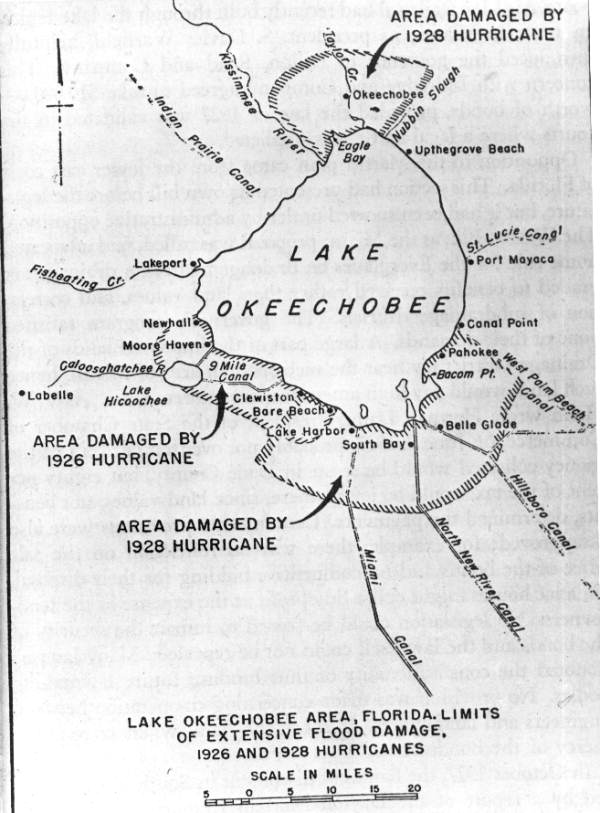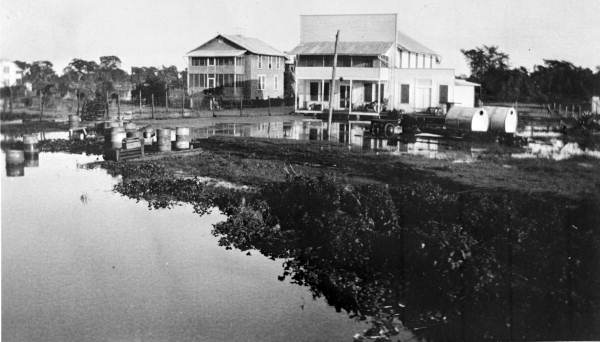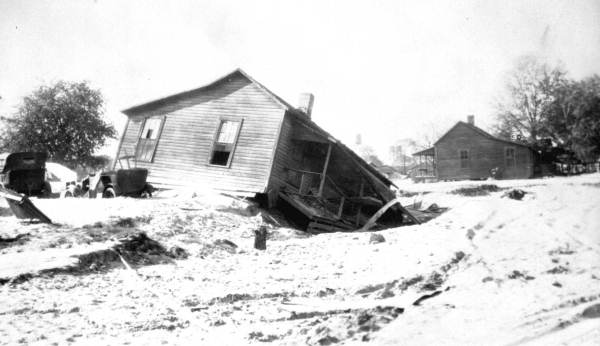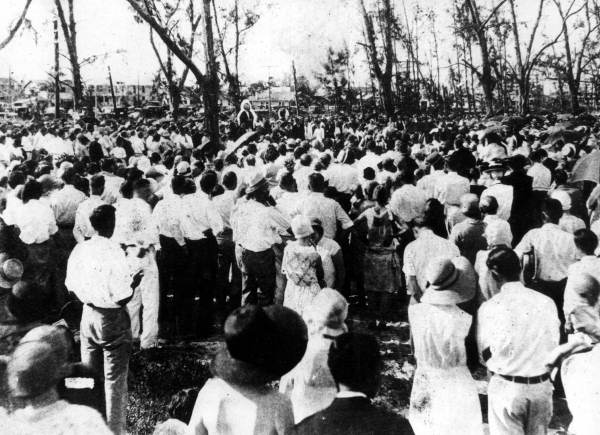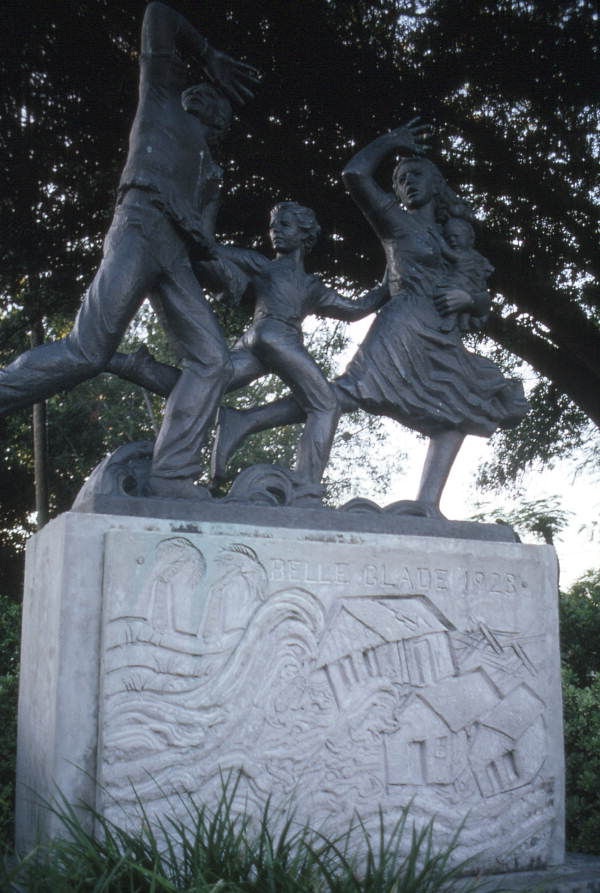Description of previous item
Description of next item
When the Dam Breaks...
Published September 9, 2014 by Florida Memory
The threat of hurricanes and tropical storms is an inescapable part of living in Florida. To experience their wrath is to confront head-on the brutal power of Nature. Ask around, and many Floridians will be able to name the larger ones they’ve witnessed or heard of. Betsy, Donna, Andrew, and Charley usually make the list.
Some of Florida’s most destructive hurricanes, however, hit the state long before the National Weather Service began assigning names to tropical cyclones. One of the deadliest of these remains known to history only as the Okeechobee Hurricane of 1928.
Even with their inland location, the settlements surrounding Lake Okeechobee were vulnerable to flooding and storm surge. The lake itself was highly unstable, rising and falling by as much as a foot in a matter of hours depending on regional rainfall. Despite the danger, farmers coveted the land surrounding Okeechobee for the moist black soil it provided. To make the area viable for agriculture, canals and dirt levees were used to hold back the waters and reclaim the flood plain for planting. By the 1920s, avocados, citrus, sugar cane, and other crops filled thousands of acres in the region.
Occasional levee breaches and flooding reminded residents that their protection from the Okeechobee waters was tenuous at best. In September 1928, the lake was already high owing to heavy recent rains. When reports began coming in over the radio that a serious storm was lashing Puerto Rico, however, many locals decided they didn’t have much to worry about. If the levees and canals had performed their duties thus far, they would be just fine. And who knew? The storm wasn’t even guaranteed to come their way.
But it did. About 7:00pm on the evening of September 16th, what would become known as the Okeechobee Hurricane roared ashore near West Palm Beach packing winds of up to 145 miles per hour. Moving northwest across the state, the storm pushed the swollen waters of Lake Okeechobee against its banks. The earthen dams design to hold back the lake failed, sending a wall of water through the communities of Belle Glade, Pahokee, and Chosen. High winds ripped roofs from buildings, while flood waters either lifted entire houses up and carried them away or caused them to disintegrate completely.
When morning came, the scene was one of unimaginable loss. Entire portions of towns were flattened or mangled. Property damage amounted to about 25 million dollars, but the cascading costs of the catastrophe would be felt for years to come. Worse still was the human cost. At least two thousand people perished in the flood, but the exact number was difficult to determine. Bodies were found in ditches, in trees, anyplace the swirling waters might have carried them. Farmers reported finding the skeletons of the hurricane’s victims in their fields even years later.
Accounting for everyone and burying the dead was one of the most pressing matters in the first few days after the storm passed, but it was difficult work. The storm victims’ remains deteriorated quickly under the punishing Florida sun, making identification increasingly impossible. At first, carpenters quickly assembled simple wooden coffins to receive the dead, but the number of bodies was too great. Eventually, workers were forced to load bodies onto trucks, and they were taken to mass graves in West Palm Beach. One grave was dug for whites, another for African Americans. Eventually, even this method was insufficient, and the workers turned to cremation as the only means available to dispatch the deceased with dignity. Meanwhile, survivors came together to bid their friends, neighbors, and loved ones goodbye in a mass funeral at West Palm Beach.
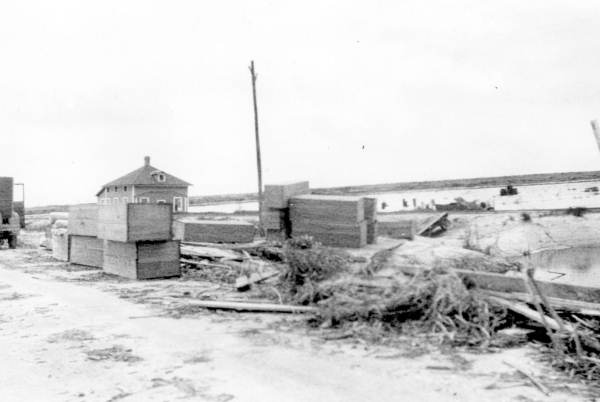
Makeshift coffins stacked alongside the road between Belle Glade and Pahokee after the Okeechobee Hurricane of 1928.
President-elect Herbert Hoover visited the Okeechobee region shortly after the hurricane to survey the damage, and upon taking office he tasked the Army Corps of Engineers with helping to prevent the disaster of 1928 from recurring. The State, for its part, created the Okeechobee Flood Control District to cooperate with federal agencies. A new series of dikes, floodways, and gates emerged to handle future flooding, although for years this was a work in progress. In the 1960s, the Army Corps of Engineers spearheaded the construction of the Herbert Hoover Dike, which now almost completely encloses Lake Okeechobee. Former President Hoover spoke at the dedication.
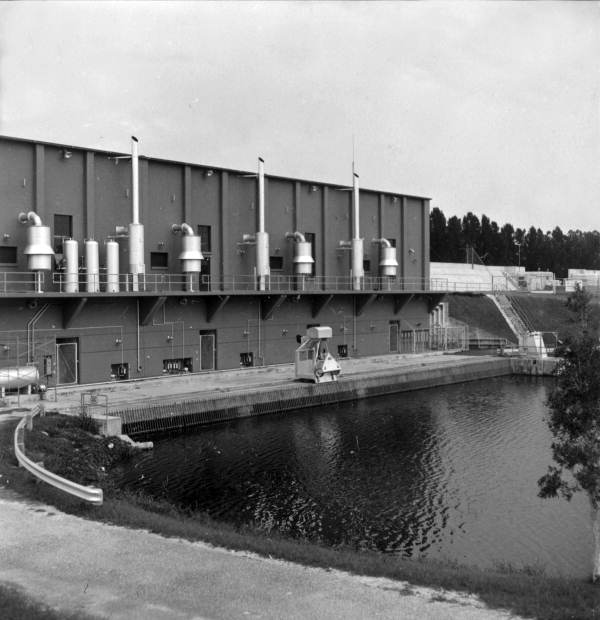
One of several floodgates installed to prevent catastrophic failures of the levees holding back Lake Okeechobee (1967).
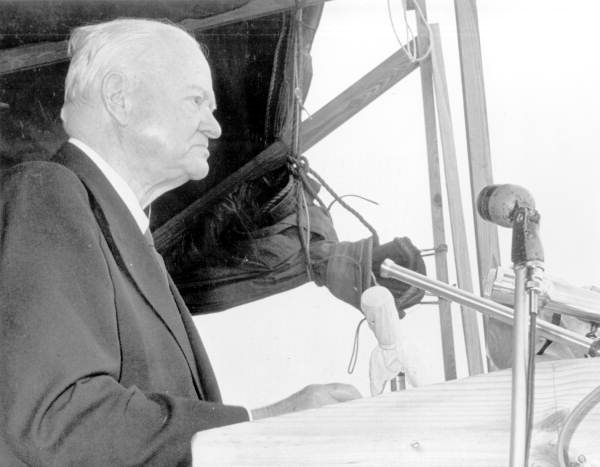
Former President Herbert Hoover addresses the crowd at a ceremony dedicating a new dike for Lake Okeechobee named in his honor (1961).
Hurricane season begins June 1st and lasts until November 30th. For more information on how to prepare yourself, your family, and your home for a tropical storm, check out the Florida Division of Emergency Management’s website at floridadisaster.org.
For more on historic Florida hurricanes, visit our Hurricanes photo exhibit on Florida Memory.
Cite This Article
Chicago Manual of Style
(17th Edition)Florida Memory. "When the Dam Breaks...." Floridiana, 2014. https://www.floridamemory.com/items/show/295216.
MLA
(9th Edition)Florida Memory. "When the Dam Breaks...." Floridiana, 2014, https://www.floridamemory.com/items/show/295216. Accessed December 30, 2025.
APA
(7th Edition)Florida Memory. (2014, September 9). When the Dam Breaks.... Floridiana. Retrieved from https://www.floridamemory.com/items/show/295216

 Listen: The Bluegrass & Old-Time Program
Listen: The Bluegrass & Old-Time Program